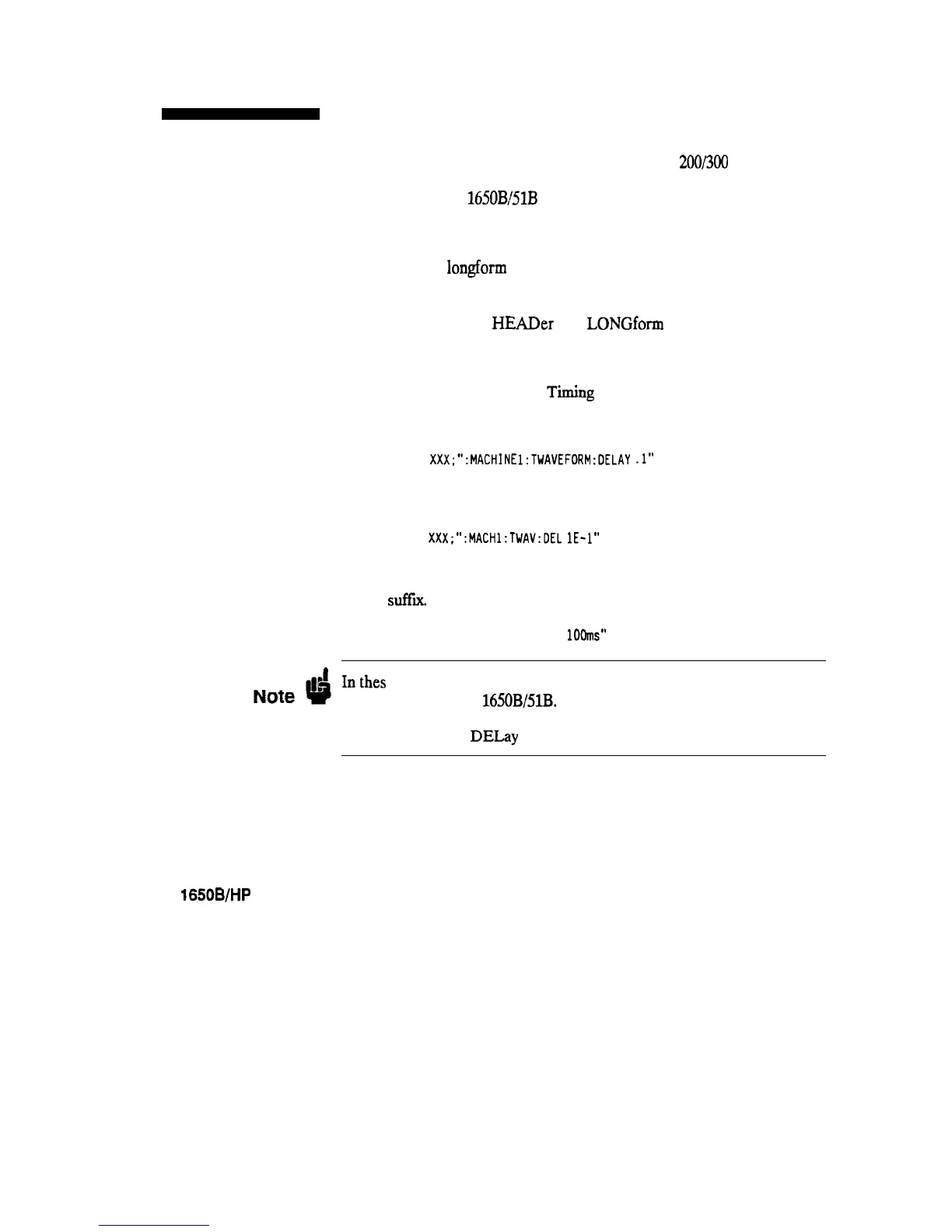Program
Examples
The program examples given for each command in the following chapters
and appendices were written on an HP 9000 Series 200/300 controller
using the HP BASIC 4.0 language. The programs always assume a generic
address for the HP 1650B/51B of XXX.
In the following examples, special attention should be paid to the ways in
which the command and/or query can be sent. Keywords can be sent
using either the longform or shortform (if one exists for that word). With
the exception of some string parameters, the parser is not case-sensitive.
Upper-case (capital) and lower-case (small) letters may be mixed freely.
System commands like
HEADer
and LONGform allow you to dictate
what forms the responses take, but have no affect on how you must
structure your commands and queries.
The following commands all set
Timing
Waveform Delay to 100 ms.
l
keywords in longform, numbers using the decimal format.
OUTPUT
XXx;":MACHINEl:TWAVEFORM:DELAY
.l"
l
keywords in shortform, numbers using an exponential format.
OUTPUT
XXX;":MACHl:TWAV:DEL
lE-1"
l
keywords in shortform using lower-case letters, numbers using a
Sllffil.
OUTPUT XXX;":machl:twav:del 1OOms"
e
examples, the colon shown as the first character of the command
is optional on the HP
1650B/5lB.
The space between
DELay
and the argument is required.
HP 1650B/HP 1651B
Programming and Documentation Conventions
Programming Reference
4-9
